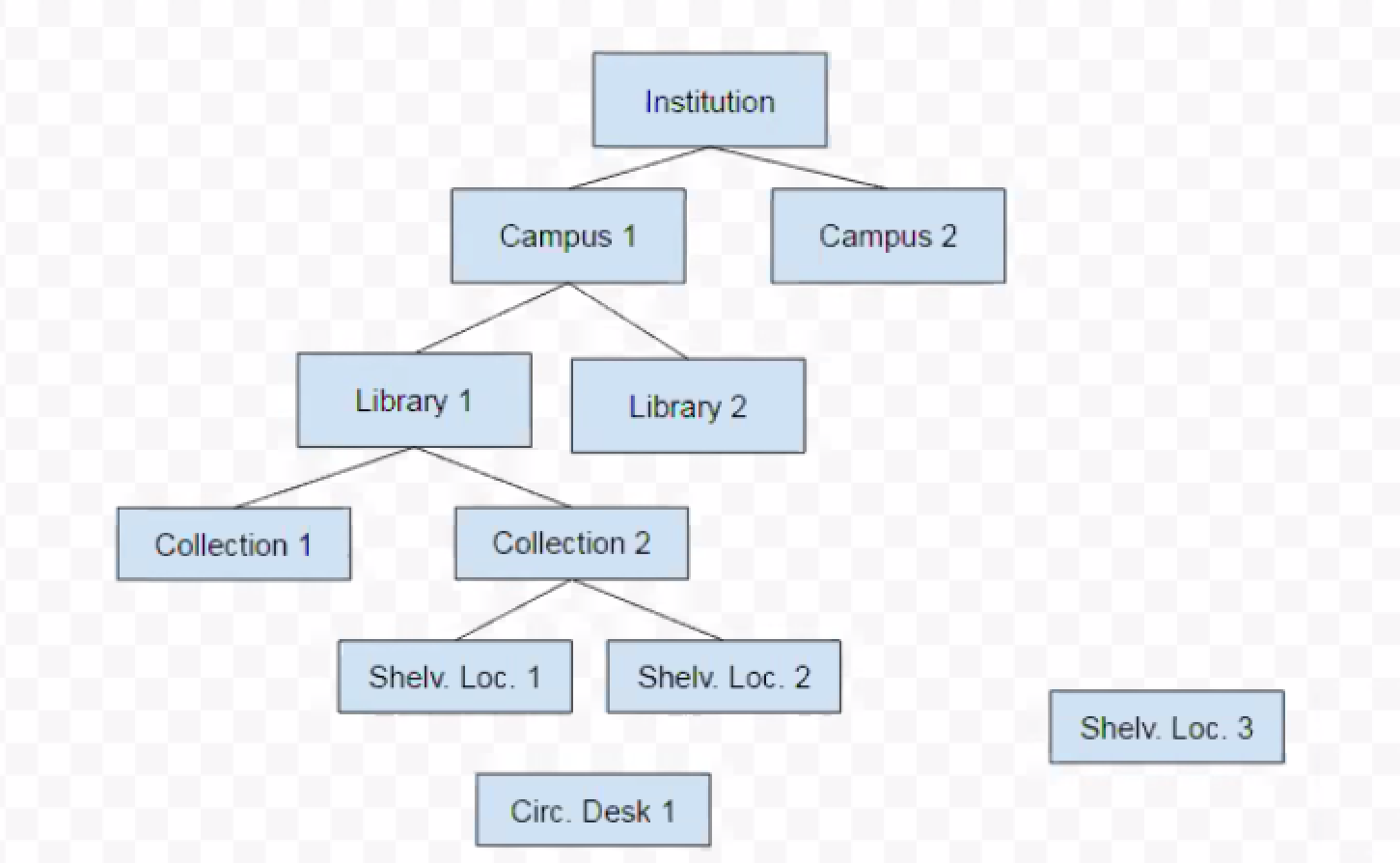2017-05-08 Resource Access Meeting Notes
Date
Attendees
- Mark Canney
- Cheryl Malmborg
- Cate Boerema (Deactivated)
- Charlotte Whitt (note taker)
- David Bottorff
- William Weare
- Rameka Barnes
Goals
- Continue discussion of renewals and loan actions
- Begin discussion of locations
Discussion items
| Time | Item | Who | Notes |
|---|---|---|---|
| 5 min | Housekeeping | Andrea |
|
| 30 min | Renewals and 'loan actions' continued. | Cate | Look at Alma’s notion of “Loan Actions” which logs actions taken on a loan so you can view the loan history. Some resources we could look at when evaluating this solution:
|
| 25 min | Locations | Cate | Locations as a loan policy component and relationship to Loan metadata document |
Notes
Cate Boerema (Deactivated) followed up on a couple of outstanding questions from last week:
a) Loan Policy Metadata. re. Loan. Closed library due date. Off set. To configure when something comes due - at the beginning of a day, or at the end of a day. Especially relevant for 24-hours open libraries. This is a one time setting feature, and we'll take it out of this form (see: wire frame)
b) Renewals. Looking at Alma's documentation. We'll get some more UX design on, how this would look in FOLIO. David Bottorff (uChicago) showed how renewal looks in Kuali-OLE. David showed: Patron Details screen, and highlighted, that barcodes were hyperlinked. The table capture the renewal history, but doesn't capture the failed renewals. The shown screen dumps from Kuali-OLE will be uploaded to Google drive: Resource_Access_SIG. Cheryl Malmborg mentioned that an existing bug in Kuali-OLE on how to set a date, would be solved by setting a date rule in Drupal. All agreed that Alma's loan history record looked very useful. next step will be to put up some mock ups on the renewal process in FOLIO.
- The No's in the initial draft were discussed, and modified.
- Andrea pointed out the following situations: If a patron return an item to Lib1, but it belong to Lib2, then the item need to be send back to the library, who owns the item. In this situation relevant with a history record, to track who purchased this item, and where does it belong, but maybe not reside at the moment.
- Floating collections (where the item is returned, is where it is going to live). Floating collections are more common for public libraries, but also relevant for some academic libraries.
- Joanne Leary mentioned the scenario with one library having multiple circ. desks (bindery, regular lending, course reserve, etc.). In this situation it will be relevant to capture the operatoer ID.
- David Larsen mentioned the need to separate between: a) a permanent location, and b) a temporary location.
- David Bottorff pointed out, that multiple libraries in the same building, need to be treated as separate libraries. Andrea mentioned UPenn as an example on one building housing four libraries: 1) The Rare Books and Manuscripts library, 2) The Music library, 3) The Business library, and 4) The Weigle Information Commons
- and then there is also the possibility of having books in the same room, but they belong to two different shelving locations.
Recording - available through 5/23/2017
https://zoom.us/recording/play/2yp6KC2zQxjWbqs_kq6lBIIURpwU31DwFCjFffeFaaJT-InhBco-f9ue8UF64GTf
